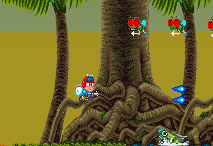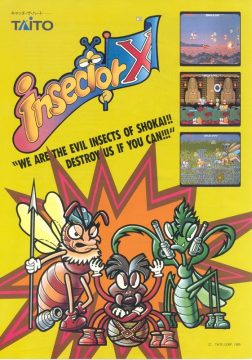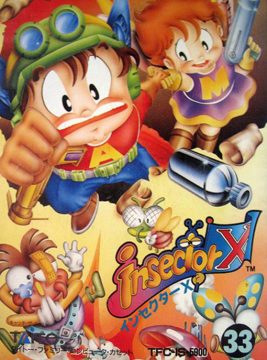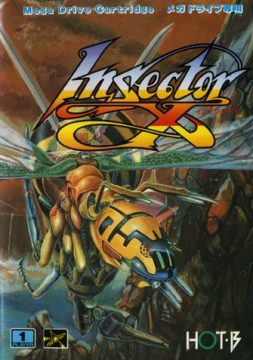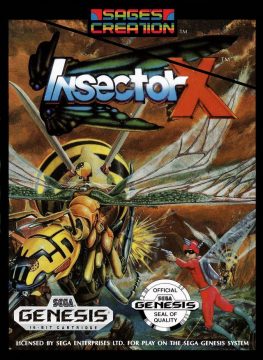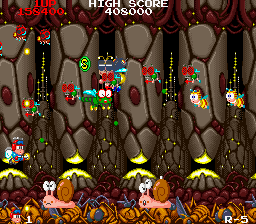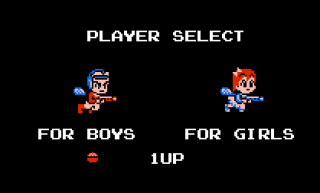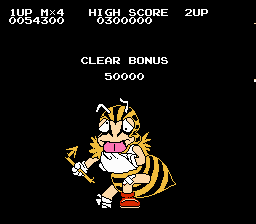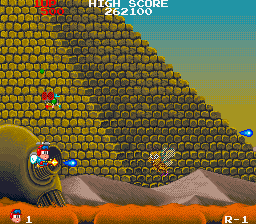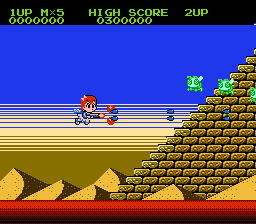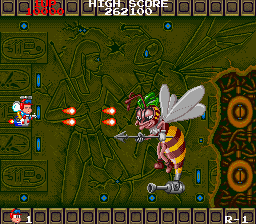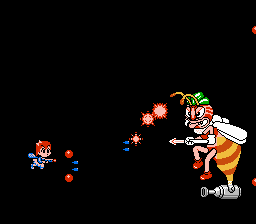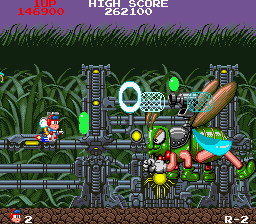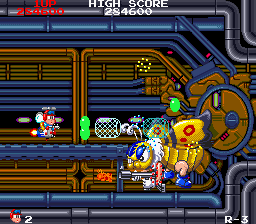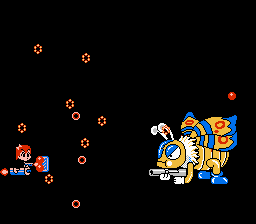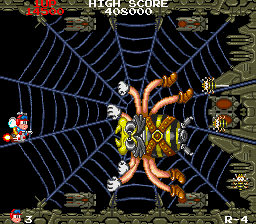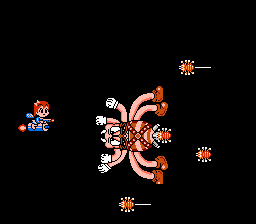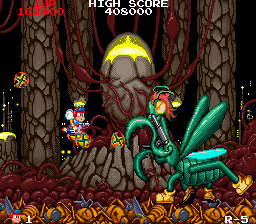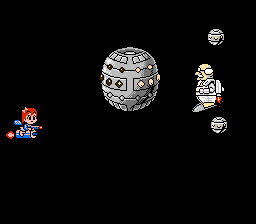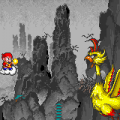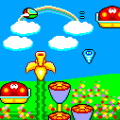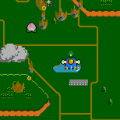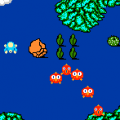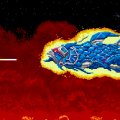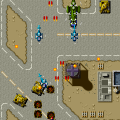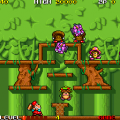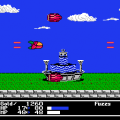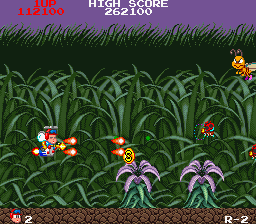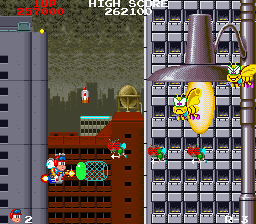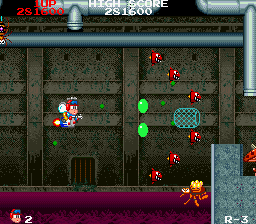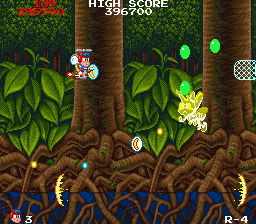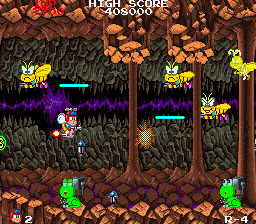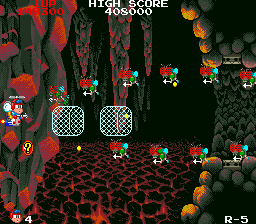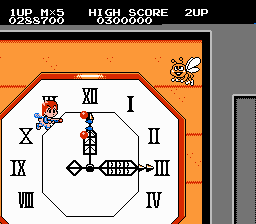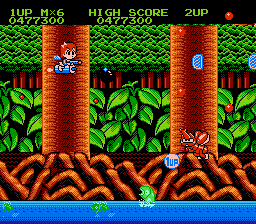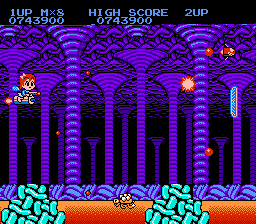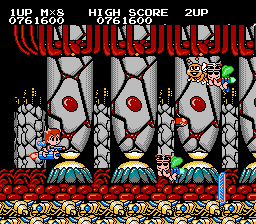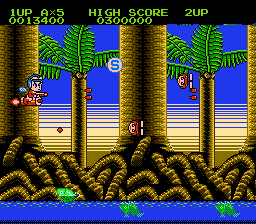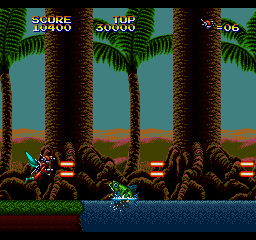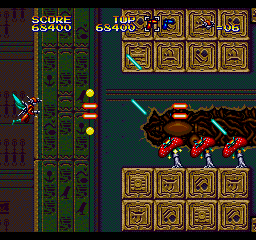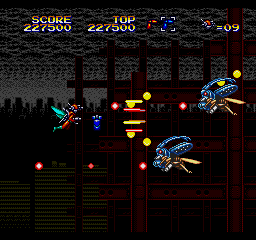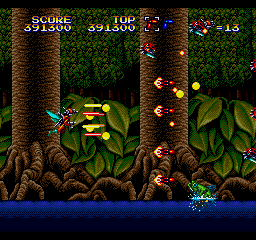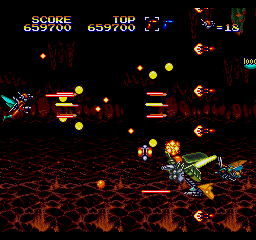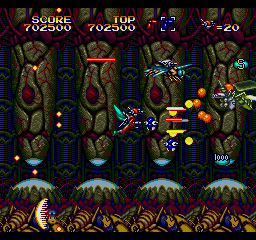Insector X is a rather clever title. It combines a science-fiction sounding name “Sector X”, implying a shooter, with “insect”, implying, well, insects. It was patterned after Taito’s Darius, except featuring bugs rather than fish. Over five stages, you control a miniature human, fighting through hordes of bees, snails, spiders, praying mantises, mushrooms, and other squiggly creatures.
The game begins, strangely enough, in the middle of an Egyptian desert, as you fly through a pyramid and witness several hieroglyphics of giant insects interacting with humans. Later stages take you through a grass field, a city, a sewer, a jungle, and finally the hive-like fortress of the enemies. It was initially released in the arcades, and ported to the Genesis and Famicom, both of which have some substantial differences. All three versions of the game were developed by Hot-B. Its original title was Konchuu Taisen (“Insect War”), marking it as a follow-up to Hot B’s previous shooter, Chuuka Taisen, which was also published by Taito.
The arcade version stars a cute little character names Yanmar, who has a silly propeller on his head. The enemies are all colorful little creatures that feel like they stepped out of a cartoon. The art style looks incongruous compared to the backgrounds, all of which imply a much darker game. It’s really strange to fly through a dark tunnel of crushed insect bodies only to be faced with a silly looking caricature of a praying mantis. According to an interview with Hot B’s Yoshinori Satake, when Insector X began development, it featured serious sci-fi overtones, but it was changed to something more comical at the request of Taito. In order to accommodate this, it seems that only the character and enemy sprites were changed, leaving the end product as something only halfway towards a cute-em-up.
The Genesis port, on the other hand, is completely different visually, and seems to have stuck to the darker tone of the original plan. The hero this time is Kai, who’s equipped with a jetpack and a mask. The enemies are more realistically drawn, or at least as realistic as the Genesis could produce. The end result looks much more consistent.
The Famicom port is much closer to the original arcade version, although it obviously doesn’t look as nice. However, again, it features different protagonists, allowing the player to choose between a male (“FOR BOYS”) and female (“FOR GIRLS”). Although there’s an option to change the difficulty, the female character is meant to be the easy mode, because she’s much more powerful, complete with a rapid fire weapon.
The changes between the three versions go beyond the aesthetics. In the arcade version, there are two types of weapons, each assigned to a button: the regular shot and the subweapons. Additionally, there are two types of subweapons: anti-air attacks, which pair well with the regular weapon, and anti-ground attacks, which attack below. Each of the three weapon types can be upgraded multiple times, granting different, more powerful attacks. However, you can only carry either an anti-air or anti-ground weapon. The only way to switch is by grabbing a subweapon power-up dropped by specific, powerful enemies, which aren’t exactly common. This leads to situations where you can get stuck using a weapon that’s inappropriate for the situation, and often times there’s no way to change it. The Famicom version uses the same power-up system and suffers from the same issue.
The Genesis version fixes this problem by allowing you to carry both types of subweapons, and lets you switch between them with a button press. There are also screen clearing bombs, which are meant to be DDT, that you can store and use at your leisure. These exist in the arcade version too, but they’re rare and used the moment they’re picked up. The Genesis version has a rapid fire option for the main weapon (though not the subweapons), but the character sprite is also much larger, making it more difficult to effectively dodge the thick volleys of fire that fill the later stages. In all versions, you only take a single hit, there are no shield items, and you are sent to a checkpoint after dying. While the arcade and Genesis versions are difficult as a result, the Famicom version is easier, solely for the fact that enemy fire isn’t nearly as thick due to the constraints of the 8-bit system.
The Genesis version also cuts out a few brief areas, including some sections that lead up to boss encounters, and the first part of the last stage. The Famicom version features most of these sections, except for the one in the last stage, which is also missing. Upon completing a level in the arcade version, you get a picture of Yanmar, which changes every level, while in the Famicom version, you get a comical picture of the level boss, beat up and covered in bandages. In the Famicom version, the background changes to black when facing a boss. The final boss is also completely different in this version, as it’s a human mad scientist as opposed to a giant praying mantis. In the Genesis version, you can also find Yanmar’s head hidden amongst other dead bugs. The Genesis port has a different soundtrack than the arcade version, while the Famicom port adapts the arcade music. None of the tracks are particularly noteworthy.
Outside of the novelty of the setting, Insector X is fairly typical. It’s stupidly difficult in spots, at least in the arcade and Genesis versions, but nonetheless, that novelty carries it enough to differentiate it from most other 16-bit shooters.
Screenshot Comparisons
